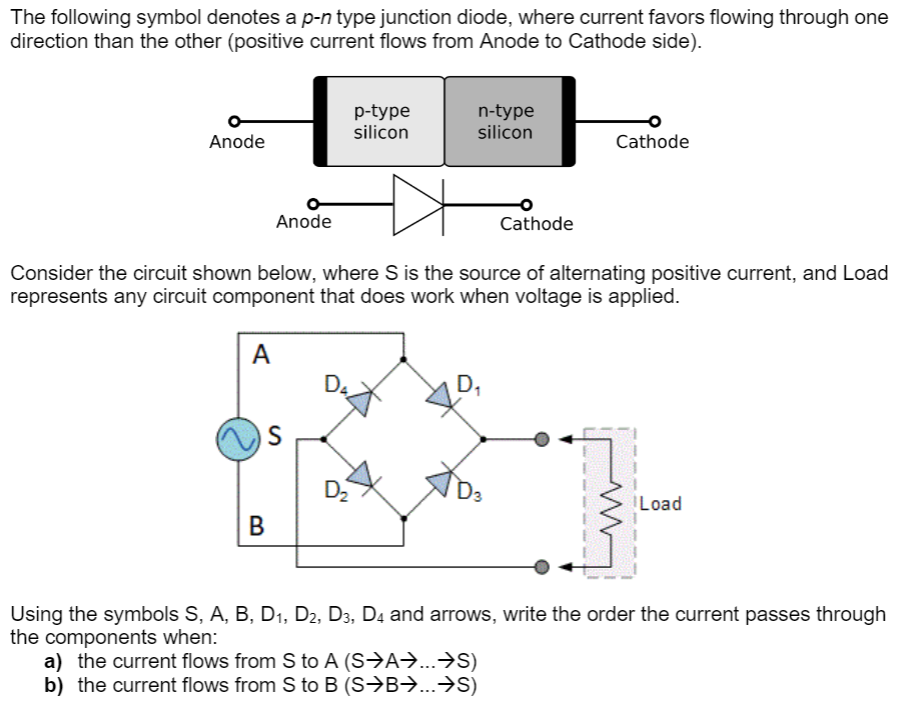Consider the circuit shown below, where S is the source of alternating positive current, and Load represents any circuit component that does work when voltage is applied. A D4 D, D2 D3 Load B Using the symbols S, A, B, D1, D2, D3, D4 and arrows, write the order the current passes through the components when: a) the current flows from S to A (S→A→...→S) b) the current flows from S to B (S→B→...→S)
Consider the circuit shown below, where S is the source of alternating positive current, and Load represents any circuit component that does work when voltage is applied. A D4 D, D2 D3 Load B Using the symbols S, A, B, D1, D2, D3, D4 and arrows, write the order the current passes through the components when: a) the current flows from S to A (S→A→...→S) b) the current flows from S to B (S→B→...→S)
Power System Analysis and Design (MindTap Course List)
6th Edition
ISBN:9781305632134
Author:J. Duncan Glover, Thomas Overbye, Mulukutla S. Sarma
Publisher:J. Duncan Glover, Thomas Overbye, Mulukutla S. Sarma
Chapter4: Transmission Line Parameters
Section: Chapter Questions
Problem 4.2P: The temperature dependence of resistance is also quantified by the relation R2=R1[ 1+(T2T1) ] where...
Related questions
Question

Transcribed Image Text:The following symbol denotes a p-n type junction diode, where current favors flowing through one
direction than the other (positive current flows from Anode to Cathode side).
p-type
silicon
n-type
silicon
Anode
Cathode
Anode
Cathode
Consider the circuit shown below, where S is the source of alternating positive current, and Load
represents any circuit component that does work when voltage is applied.
A
D4
D,
S
D2
ILoad
В
Using the symbols S, A, B, D1, D2, D3, D4 and arrows, write the order the current passes through
the components when:
a) the current flows from S to A (S→A>..→S)
b) the current flows from S to B (S→B→...→S)
Expert Solution
This question has been solved!
Explore an expertly crafted, step-by-step solution for a thorough understanding of key concepts.
Step by step
Solved in 2 steps with 2 images

Knowledge Booster
Learn more about
Need a deep-dive on the concept behind this application? Look no further. Learn more about this topic, electrical-engineering and related others by exploring similar questions and additional content below.Recommended textbooks for you

Power System Analysis and Design (MindTap Course …
Electrical Engineering
ISBN:
9781305632134
Author:
J. Duncan Glover, Thomas Overbye, Mulukutla S. Sarma
Publisher:
Cengage Learning

Power System Analysis and Design (MindTap Course …
Electrical Engineering
ISBN:
9781305632134
Author:
J. Duncan Glover, Thomas Overbye, Mulukutla S. Sarma
Publisher:
Cengage Learning